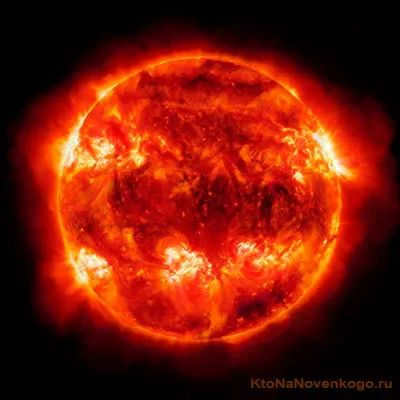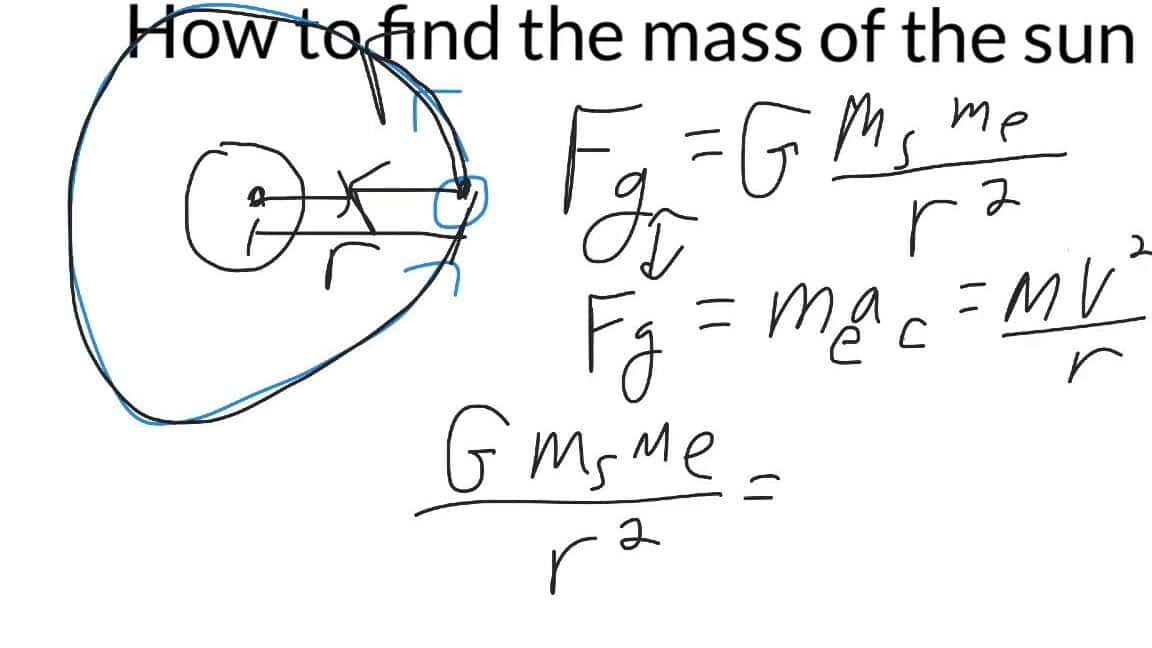The sun, a magnificent celestial body, emits an immense amount of energy as a result of hydrogen fusion in its core. This fusion process converts hydrogen into helium, and the radiant energy is then released into the vast expanse of space. Throughout history, societies have revered the sun for its crucial role in sustaining life on our planet. Unsurprisingly, determining the mass of this awe-inspiring star has been a subject of great interest and scientific investigation.
Size
The Sun, also known as Helios, is the nearest star to our planet. It falls under the classification of “Yellow Dwarfs.” Similar to other celestial bodies, Helios lacks a solid surface. Its main layer is known as the photosphere, which emits energy. Thus, the size of the Sun refers to the diameter of its photosphere.
Measuring the size of the celestial body can be easily done using a simple method. This experiment requires a dimly lit room, where sunlight enters through a small aperture. By placing a thick white paper in front of the beam, a small image of the Sun can be observed on the surface of the sheet. The size of the spot increases as the paper is moved farther away from the hole. At a distance of 107 cm, the diameter of the spot is 1 cm, while at a distance of 214 cm, it increases to 2 cm. In other words, the diameter of the actual celestial body is 107 times smaller than the distance to Earth, which is approximately 1,400,000 kilometers.
By observing a phenomenon known as “Bailey’s rosary” during an eclipse, scientists have been able to accurately determine the precise diameter of the Sun in kilometers. These rosaries are red dots that appear on the circumference of the solar disk and have been used by astronomers to precisely pinpoint the position of the sun and measure its size.
An analysis of historical data, combined with ongoing modern monitoring, has revealed that the diameter of the Sun is not constant and undergoes changes. For instance, in the 17th century, the Sun was approximately 2,000 kilometers wider than its current size. Astronomers have also discovered that the star expands and contracts within a span of 160 minutes, coinciding with changes in the amount of energy it emits.

Measuring the Sun’s Radius
Scientists have determined the approximate radius of the Sun by measuring the duration of solar eclipses and observing the movement of Mercury and Venus against the background of the solar disk. The calculated radius is approximately 695,990 kilometers.
Further refinements to the calculations were made possible by instruments aboard space stations. Using the method of helioseismology, researchers studied the motion of f-waves on the Sun’s surface. This method yielded a slightly different result, with a radius of 695,700 kilometers, which is 300 kilometers less than the previous calculation. It’s important to note that this discrepancy could have significant implications for the study of the Sun, including its composition and activity.
Comparison of sizes of celestial bodies
The solar radius is commonly used as a unit of measurement in astronomy to compare the sizes of other cosmic objects:
- Polaris is 30 times the size of the Sun, meaning it has 30 solar radii.
- Our planet appears as a tiny speck in comparison to the Sun, being 109 times smaller in size.
- However, the largest planet in our solar system, Jupiter, is only 9.7 times smaller than the Sun.
Within the vast expanse of the Universe, there are giant stars that greatly surpass the size of our Sun. The largest known star, VY Canis Majoris, has a diameter equivalent to 2100 solar radii according to scientists.
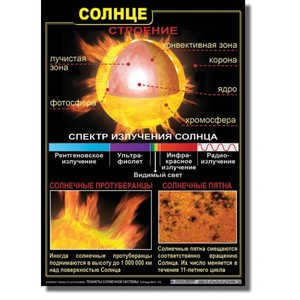
Measuring and Comparing the Mass of the Sun
The Sun, which accounts for 99.86% of the total mass in our star system, took approximately 5 billion years to form.
There are three scientific methods that have been developed to measure the mass of celestial bodies:
- Gravimetric: This method involves measuring the gravitational parameters that characterize the surface of the body being measured.
- The Law of Kepler’s Third Law. This law is applicable when a planet has at least one satellite. The calculations take into consideration the distance between the planet and its satellite, as well as the orbit period. Consequently, the mass ratio between the planet and the star can be determined.
- An examination of the observable effects caused by the movement of certain celestial bodies in relation to the motion of others.
First and foremost, the geodetic method was employed to determine the mass of our planet, which was estimated to be 6*10 24 kg. Subsequently, using Kepler’s Third Law, we calculated the mass of the Moon to be 73477*10 22 kg. Finally, we determined the mass of the Sun, which is equivalent to 19891*10 30 kg.
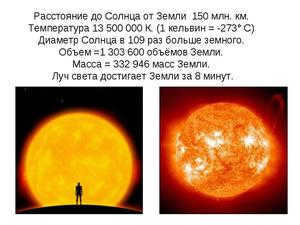
The mass of the Sun has become a standardized unit of measurement. It is utilized by astronomers to quantify different celestial entities. For instance, Eta Carinae, the largest known star, is estimated to be about 150 times the mass of our Sun.
Experts have predicted the future solar activity. By studying the behavior of other stars, they have deduced that our star will gradually deplete the energy of its photosphere. As a result, it will expand to an unprecedented size, potentially engulfing the neighboring planets Mercury and Venus. There is a possibility that the Earth will face a similar fate. Eventually, the Sun will undergo a transformation into a Red Giant, experiencing a period of growth before undergoing a catastrophic contraction. During this contraction, the Sun will shrink to a size comparable to that of the Earth at present. It will then be classified as a White Dwarf.
Discover a multitude of fascinating facts about the dimensions of the celestial bodies within our solar system by watching our informative video.
Please show your support by giving this video a thumbs up. It means a lot to our content creators. Don’t forget to subscribe to our channel on Yandex.Zen and join our Vkontakte group for more updates.
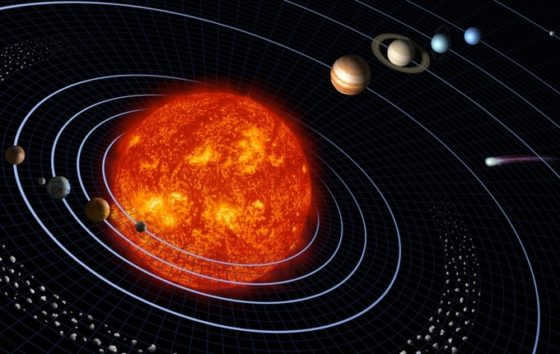
By observing the Sun, we can make a rough estimate of the power of photon radiation. Many individuals have experienced damage to their retinas from solar burns while observing partial solar eclipses without wearing protective glasses. This serves as an indirect confirmation of the high intensity of solar photon flux at a distance of 150 million kilometers. It is important to note that the human eye starts to react to light when at least 200 quanta of light per second enter the pupil [1, p. 48]! So, how many quanta of energy enter the eye simultaneously when a partially obscured solar disk is present, causing retinal burns? The answer is a significant amount.
The Sun possesses a symmetrical distribution of radiant energy, allowing its rays to diverge uniformly in all directions.
So, how much solar radiation does the Earth actually capture, or more precisely, how much gravitational energy is transferred to maintain the Earth’s orbit? The energy received by the Earth is defined by the solar constant. This energy encompasses gravitational energy as a component. As mentioned earlier, the law of universal gravitation should involve energies rather than the masses of gravitating bodies. However, since isolating gravitational energy is challenging, let us focus on specifying the mass of the Sun, which is the primary factor in the law.
The Sun releases a tremendous amount of energy through photon radiation in an effort to cool down. Nature, in all of its forms, always seeks to cool. As a result of this radiation, the Sun is gravitationally attracted to all cosmic objects in a spherical manner. One could say that it is attracted to everything and yet to nothing at the same time. The Sun does not exert a pulling force on anyone or anything; it simply emits photons, which are the quanta of gravity.
Let’s specify the mass of the Sun, which is currently equal to: MS = 1.98892(± 0.00025) x 1030 kg. This value is calculated using the formulas of universal gravitation, Newton’s second law, Kepler’s third law, and the Earth’s orbital velocity.
ua -14959787070700 m represents the length of the major semi-axis of the Earth’s orbit, also known as 1 astronomical unit (a.u.) [2].
T = 365.2564 days (3.155815296 x 107 s) denotes the sidereal year for the Earth.
In the above formula, let’s substitute the gravitational constant (G) with the energy coefficient (GE) and calculate the mass of the Sun using the refined formula (2) (article: “Gravitational constant – a variable value” [3]). Since the Sun’s physical parameters are calculated based on the Earth’s parameters, the gravitational energy coefficient GS for the Sun will be averaged.
Now, let’s determine the energy coefficient for both the Sun and the Earth.

The effective temperature of the Sun’s photosphere, Θ=5778 K,
The average temperature of the Earth is Θ=287 K (14 o C),
The maximum temperature of matter in nature is Θmax=4,39236568935×1012 K.
Using formula (1), we can determine the mass of the Sun by substituting the value of GE.

It is evident that the mass of the Sun has decreased significantly. Can we trust this result? If we compare the calculated mass of the Sun using the gravitational forces exerted by the Earth according to two different formulas derived from Newton’s laws – F=GE·MS·ME/R 2 and F=ma=mv 2 /R, we find that they are equal. This equality arises from the redistribution of the values of mass and gravitational constant in the law of universal gravitation, where one has decreased while the other has increased proportionally.
The accuracy of the reduced mass of the Sun can be evaluated by contrasting the masses of the Earth and the Sun. When we examine this data, the following numbers are always concerning: the Sun’s mass is 333,434 times greater than the Earth’s mass, and the acceleration of free fall on the Sun is only 28 times greater than on Earth! Additionally, the density of the gaseous solar plasma (1410 kg/m 3 ) is almost one and a half times greater than the density of water. This is remarkable considering that the gaseous component of the Sun’s matter is composed of over 70% hydrogen. Even the unaided eye can observe a significant discrepancy in the aforementioned figures.
Let’s attempt to compare them. Here are some parameters of the Sun in relation to the Earth. Based on the new circumstances, let’s specify the density of solar matter by dividing the obtained mass by the volume.
The Earth’s density, calculated as the ratio of its mass to its volume, is equal to 1.92-1029 kg/1.40927-1027 m3, or 136.34288-kg/m3 (4).
Comparing this with the density of the Sun, which is 5500 kg/m3, we find that the Earth’s density is 40 times smaller (5500 kg/m3 / 136.34288-kg/m3 = 40).
On the other hand, the mass of the Sun is much greater than the mass of the Earth. The mass of the Sun, denoted as MS, is 1.92-1029 kg, while the mass of the Earth, denoted as ME, is 6-1024 kg. Therefore, the mass of the Sun is 32000 times greater than the mass of the Earth (MS/ME = 1.92-1029 kg / 6-1024 kg = 32000) (5).
Based on these calculations, we can conclude that the newly obtained data regarding the mass and density of the Sun are more accurate and closer to the truth.
To summarize, I would like to emphasize once more why the mass of the Sun has experienced such a significant decrease. The key factor here is energy, specifically temperature. The calculations of the Sun’s mass utilize the gravitational constant, which corresponds to the temperature of the Earth (293 K). However, this approach is incorrect because the effective temperature of the photosphere is 5778 K. Gravitational attraction is determined by energy, and it is possible to inject different amounts of energy into the same mass. The equation m=E/c^2 is not applicable in this scenario; it is only valid for photons or particles without rest mass. A separate article will be published about this formula and its practical applications.
Now, let’s redirect our attention to the “moon bang” and the primary questions surrounding the Moon. How does it manage to orbit around the Earth despite its attraction to the Sun being 2.2 times stronger?
Sources
- Savelyev I.V., Course of General Physics, book 5, “Astrel-AST”, M. 2004.
- Wikipedia, Astronomical unit, / URL: https://goo.gl/Tlewzn.
- Ershov G D, Gravitational constant is a variable quantity, Gravitation / URL:http://gennady-ershov.ru/g/gravitacionnaya-postoyannaya-velichina-peremennaya.html.
- Sun/Earth Comparison, Bulk parameters / URL: http://www.webcitation.org/60qCI3rR8.
Related Posts
2 Comments
Similar Articles
2 Feedbacks
In my opinion, the temperature of the Sun’s surface you used as a base, 5780°K, is incorrect. The main gravitational force is actually generated by the core, which has a temperature of 15,700,000,000°K. Therefore, the Sun has not lost 1.98847E+30 kg in mass. Let’s calculate and confirm this.
- G = T / Tmax (15,700,000 / 4.3924E+12) = 3.57435571E-6 kg.
- g = G * M / R^2 3.57435571E-6 * (1.98847E+30 / 6.95508693E+8^2) = 1.46930409E+7 m/sec
- M = g * R^2 / G 1.46930409E+7 * 6.95508693E+8^2 / 3.57435571E-6 = 1.98847E+30 kg.
Actually, it’s interesting to note that according to Wikipedia, the acceleration due to gravity on the Sun is 274 m/sec. Even at a temperature of 5788°K, the acceleration would be 5,416.7 m/sec. This is calculated using formula (4), which shows 9.79 m/sec as an example for Earth. Let’s calculate using the official constant, G = 6.6743E-11 kg.
- g = G * (M / R^2) 6.6743E-11 * (5.97219E+24 / 6.37816E+6^2) = 9.7982501 m/sec.
The total mass of the Sun is 1.98847E+30 kg.
By the way, it’s interesting to note that the ratio in temperature between the Earth and humans is 20°C / 36.6°C. On average, we attract the Earth to us more strongly than it attracts us by 0.37 kg. The gravitational force of a human: (273.15 + 36.6) / 4.3924E+12 = 7.05195337E-11. The gravitational force of the Earth: (293.08) / 4.3912E+12 = 6.67425761E-11. Let’s subtract the coefficients and convert to grams: (7.051 – 6.674) = 0.37 kg. In total, the gravitational pull of a person + 0.37 kg is greater than the gravitational pull of the Earth. Therefore, it can be concluded that a warmer body is more likely to attract a colder body than vice versa. So, the Moon cannot be the cause of tides by attracting the Earth to itself.
And also, imagine if all the people and animals on Earth were gathered on one side and lifted up by balloons. The Earth would definitely shake and without any point of support or leverage, they would move in the wake. ))
Leave your feedback
This website utilizes Akismet to counteract unwanted messages. Discover the way your comment information is managed.

The mass of the Sun is approximately 1.9885 × 10^30 kilograms or 333,082 times the mass of the Earth.
The mass and density of the Sun:
The mass of the Sun is approximately 1.9885 × 10^30 kilograms or 333,082 times the mass of the Earth. The mass of the Earth, on the other hand, is about 5.97 × 10^24 kg.
The Sun’s mass accounts for about 99.866% of the total mass of the entire solar system.
Mass, as a physical quantity, measures the gravitational properties and inertness of a body. In modern physics, gravitational mass and inert mass are considered to be equal.
Due to the manifestation of gravitational properties and the law of universal gravitation, two bodies are attracted to each other, and this attraction becomes stronger as their masses increase. In other words, the greater the mass of a body, the more forcefully it attracts other bodies. The measure of this gravitational attraction, also known as gravitational force, is determined by the gravitational mass.
According to the law of universal gravitation, the gravitational attraction force between two material points with masses m1 and m2, separated by a distance r, is directly proportional to both masses and inversely proportional to the square of the distance:
where G is the gravitational constant, approximately equal to 6.67⋅10 -11 m³/(kg-s²).
The mass of a body remains constant and independent of its velocity during all processes.
Mass is measured in kilograms and is one of the seven fundamental units of the International System of Units (SI).
By using the mass of the Sun as a physical quantity, various other parameters of our star can be calculated, such as density, free fall acceleration, gravity, first cosmic velocity, second cosmic velocity, and more.
The average density of the Sun (ρ) is 1.408 g/cm³ or 1408 kg/m³. To provide a comparison, the average density of the Earth (ρ) is 5.5153 g/cm³.
The influence of gravity and the rate of acceleration during free fall on the Sun:
The rate of acceleration during free fall on the Sun (g) measures 274 m/s 2, equivalent to 27.93 times the acceleration experienced on Earth. In contrast, on Earth, the rate of acceleration during free fall is 9.81 m/s 2 and varies from 9.832 m/s² at the poles to 9.78 m/s² at the equator.
The rate of acceleration during free fall can be determined using the following formula:
M – mass of the celestial body (star), kg,
r 2 – the square of the celestial body’s radius, m.
Weight is the measure of the force exerted on an object in a gravitational field (typically created by a celestial body such as the Earth or the Sun) when it is supported or suspended and prevented from falling freely. The weight of an object at rest in a reference frame is equal to the force of gravity acting upon it. The force of gravity is the attractive force between a celestial body and an object.
The weight (gravity) can be calculated using the formula F = m-g,
where g is the acceleration due to gravity, measured in m/s^2.
On the celestial bodies within the solar system, a person with a mass of 72 kg would have the following weight:
Velocity in Space on the Sun:
The initial velocity (v1) in space on the Sun is 437 km/s. In comparison, the initial velocity in space on Earth is 7.91 km/s.
The initial velocity (also known as circular velocity) is the minimum horizontal velocity required to enable an object to move in a circular orbit around a celestial body, at a given height above its surface.
The value of the initial velocity is determined by the mass and radius of the celestial body, as well as the altitude above its surface.
The initial velocity can be calculated using the following formulas:

How to Determine the Mass of the Sun?
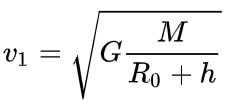
,
h – height above the surface of the planet, m.
The second velocity in space (v2) for the Sun equals 617.7 km/s. It is 55.19 times higher than the second velocity in space on Earth. To put things into perspective, the second velocity in space on Earth is 11.19 km/s.
The second velocity in space (also known as parabolic velocity, escape velocity, or escape speed) is the minimum velocity that must be imparted to an object (such as a spacecraft) with a negligible mass compared to the mass of a celestial body (such as a planet) in order to overcome the gravitational attraction of that celestial body and escape a closed orbit around it.
The second velocity in space is determined by the radius and mass of the celestial body.
The second velocity in space is calculated using the following formulas:

,
.
Change in the mass of the Sun:
A thermonuclear reaction involving protons in the core of the Sun results in the formation of helium-4, causing a conversion of 4.26 million tons of matter into radiation every second. On average, the Sun emits approximately 1.3⋅10 36 particles per second through solar wind. However, this loss is insignificant when compared to the Sun’s overall mass. The total mass loss of the Sun is approximately 2 – 3⋅10 -14 solar masses per year. Over a period of 150 million years, this loss is equivalent to the mass of the Earth.
The expulsion of matter from the Sun’s solar corona is referred to as a coronal mass ejection. This ejection consists mainly of plasma containing electrons and protons, as well as trace amounts of heavier ionized chemical elements such as helium, hydrogen, oxygen, and others.
Less than 2% of the total weight is comprised of metals, with all other elements being metals. The composition of the Sun was inherited from the interstellar medium in which it originated. The core makes up approximately 20-25% of the radius from the center. The temperature within the core measures around 15.7 million Kelvin, while the surface temperature is about 5800 Kelvin.
Energy
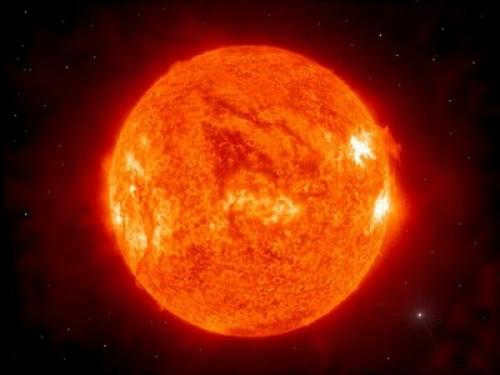
The Sun’s power is approximately 1368 watts of energy per 1 square meter of the Earth’s surface area. When the Sun is at its zenith on clear weather conditions, the energy that reaches the Earth’s surface is about 1000 watts per meter square, as some of the energy is trapped in the atmosphere.
At the top of the Earth’s atmosphere, sunlight consists of approximately 50% infrared light, 40% visible light, and 10% ultraviolet light.
However, the atmosphere filters out more than 70% of the ultraviolet light.
Distance
Many individuals are curious about the exact number of kilometers that separate our planet from the Sun. The distance between the Earth and the Sun is not fixed, but rather varies between 147 and 152 million kilometers due to the elongation of the Earth’s orbit. The point of closest proximity is referred to as “perihelion” and occurs from January 2nd to January 5th, while the farthest point is known as “aphelion” and takes place from July 2nd to July 5th. Throughout the course of a year, our planet continuously moves from one point to another, orbiting in a circular manner. However, these slight fluctuations have no impact on the Earth’s climate. Scientists possess the knowledge and formulas required to calculate the distance to the Sun during any given time of the year.
Attention! The nearest planet to the Sun, Mercury, is located at a distance of 58 million kilometers.
The density of the Sun. The size and mass of the Sun
The Sun is responsible for providing warmth and light to our planet, making life as we know it possible. This applies not only to humans, but also to all of Earth’s plants and animals. The Sun plays a vital role in energizing all the processes that occur on Earth. In addition to light and heat, our planet is constantly impacted by particle streams and various forms of solar radiation emitted by the Sun.
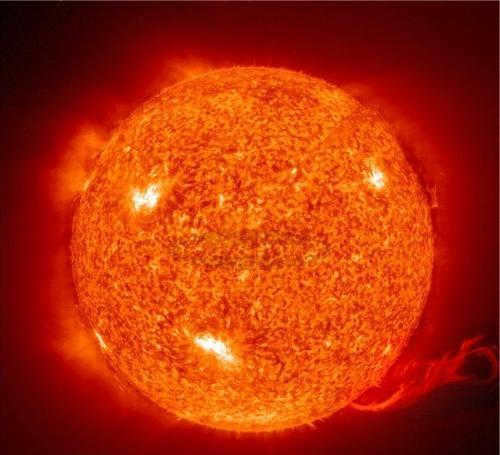
The influence of the Sun has a significant impact on human well-being. Many individuals experience a decline in health during magnetic storms.
This article will provide a comprehensive overview of the Sun, including its composition, temperature, mass, and its effects on Earth.
The Sun is the nearest star to our planet. The study of the Sun provides valuable insights into the reactions occurring within its core and on its surface, enabling us to better understand the physical nature of celestial bodies, which appear to us as tiny, shimmering dots in the sky. By studying the processes taking place in the vicinity and on the surface of the Sun, we can gain a deeper understanding of the phenomena that characterize the space surrounding Earth.
The Sun’s size demands separate consideration. It is a massive star not just in terms of size, but also in terms of volume. Its diameter surpasses that of the Earth by 109 times, and its volume is 1.3 million times greater.
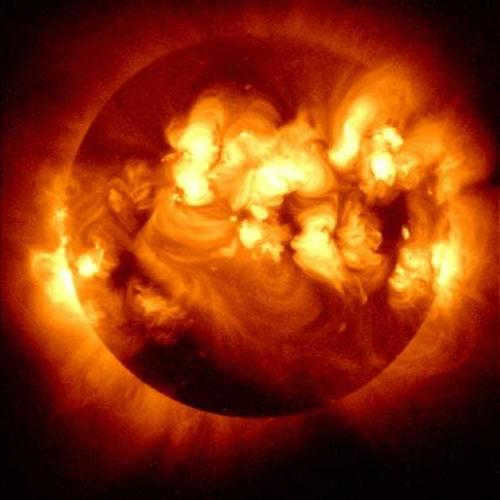
The Sun’s surface has an approximate temperature of 5800 degrees, resulting in it emitting mostly white light. However, due to the Earth’s atmosphere absorbing and scattering the shorter wavelengths of light, direct sunlight on our planet appears yellow.
In the central zone of the Sun, temperatures reach a staggering 15 million degrees. These extreme temperatures cause the Sun’s matter to be in a gaseous state, and within the depths of this massive star, the atoms of chemical elements are separated into free-moving electrons and atomic nuclei.
The weight of the Sun is 1.989*10^30 kilograms. This number surpasses the weight of our planet Earth by 333 thousand times. The average density of matter is 1.4 g/cm3. The average density of our planet is almost 4 times higher. Additionally, in the field of astronomy, there exists the concept of solar mass – a unit of measurement used to describe the weight of stars and other astronomical objects (galaxies).
The gaseous mass of the Sun remains intact due to the overall attraction towards its center. The upper layers compress the deeper layers with their own weight, resulting in an increase in pressure as the depth of the layer increases.

The high density of matter in the depths of the Sun is a result of the pressure reaching hundreds of billions of atmospheres in its interior.
As a consequence, thermonuclear reactions occur within the Sun’s core, where hydrogen is converted into helium, releasing nuclear energy. Over time, this energy gradually permeates the dense solar matter, first reaching the outer layers, and then radiating out into space.
The Sun primarily consists of hydrogen (73%), helium (25%), and trace amounts of other elements such as nickel, nitrogen, sulfur, carbon, calcium, iron, oxygen, silicon, magnesium, neon, and chromium.
The size of the Sun in meters and its mass in solar units
Comparing the sizes and masses of the largest stars: the star with the largest diameter in the image is VY of the Big Dog (17 ± 8 Mʘ); the others are ρ of Cassiopeia (14-30 Mʘ), Betelgeuse (11.6 ± 5.0 Mʘ), and the very massive blue star Pistol (27.5 Mʘ). The Sun (1 Mʘ) at this scale occupies 1 pixel in the full-size image (2876 × 2068 pixels). The orbits of Earth (gray), Jupiter (red), and Neptune (blue) are shown.
Solar mass or solar mass is a unit of mass measurement used in astronomy to express the mass of stars and other astronomical objects (e.g., galaxies). It is represented by M
Mass of the Earth
- 81.3 times the mass of the Moon ;
- 0.00315 times the mass of Jupiter (the mass of Jupiter is 317.83 times the mass of the Earth );
- 0.0105 times the mass of Saturn (Saturn’s mass is 95.16 times the mass of the Earth );
- 0.0583 times the mass of Neptune (Neptune’s mass is 17.147 times the mass of the Earth );
- 0.00000300349 times the mass of the Sun (the Sun’s mass is 332946 times the mass of the Earth ).
Changes in Earth’s Mass
The Earth’s mass is not constant, and currently, it is experiencing more mass loss than gain. There are various factors that influence the overall mass of the Earth.
Factors that contribute to an increase in Earth’s mass:
- Cosmic dust: This includes meteors, dust, comets, and other celestial bodies, which contribute to an increase in Earth’s mass by approximately 40,000 tons per year.
Factors that lead to a decrease in Earth’s mass:
- Dissipation of atmospheric gases: Hydrogen (3 kg/sec or 95,000 tons per year) and helium (1,600 tons per year) are released into space, resulting in a gradual loss of Earth’s mass. Additionally, some electrons from the atoms of atmospheric gases escape faster than the atoms themselves.
- Artificial satellites: Satellites in distant orbits can eventually leave the vicinity of Earth, resulting in a loss of approximately 65 tons per year.
- The decrease in the Earth’s mass leads to a weakening of its gravitational pull, resulting in a reduced ability to retain the atmosphere.
- The Earth’s temperature rise, caused by both human activities and global warming, along with solar radiation, can increase the movement of molecules, contributing to the escape of matter from the atmosphere.
Calculations in astronomy often require determining the distance between the Sun and the Earth. Additionally, it may be surprising to learn that the Sun is actually larger than our planet, even though it appears as a small ball in the sky.
Size of the Sun: mass, diameter, radius
The Sun is an enormous luminous orb containing hydrogen in its core. Within the sun, hydrogen undergoes transformation, and the resulting energy is emitted into the vastness of space. The ancient civilizations revered the Sun for a reason. Its energy is essential for sustaining life on our planet.
The Sun, also known as the Solar, is our planet’s nearest star. It is classified as a yellow dwarf. Similar to other celestial bodies, the Sun lacks a solid surface. Its primary layer is considered to be an emitting light. Consequently, the Sun’s diameter is equivalent only to the diameter of its corona.
The magnitude of the Sun can be measured in a straightforward and accessible manner. The experiment necessitates a dimly lit room through which the sun’s rays pass via a small aperture. A sheet of coarse white paper is positioned in front of the beam, resulting in a small depiction of the sun appearing on the paper’s surface. As the paper is moved farther away from the aperture, the dot becomes larger. At a length of 107 cm, the dot has a diameter of 1 cm. When it reaches a height of 214 cm, the diameter increases to 2 cm. This reveals that the actual diameter of the Sun is 107 times smaller than its distance from Earth, which is 1,400,000 kilometers.
Scientists have been able to determine the precise diameter of the Sun in kilometers by studying a phenomenon called Bailey’s rosary. During an eclipse, red dots appear around the solar disk, known as Bailey rosaries, which astronomers have used to determine the position and size of a bright celestial body.
By analyzing historical data and regularly monitoring the Sun, scientists have discovered that its diameter is not constant. In the 17th century, for instance, the Sun was 2000 km larger than it is today. Astronomers observed that stars expanded and contracted within a span of 160 minutes, with the amount of energy also changing during the same time frame.
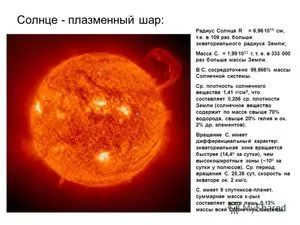
Measurement of the Sun’s Radius
The size of a star’s radius is not constant and can vary. Scientists have been able to estimate the radius of the Sun by observing its eclipse, as well as studying the movements of planets like Mercury and Venus in relation to the Sun’s disk. The approximate radius of the Sun is 695,990 kilometers.
Calculations have been refined with the help of instruments on the space station. Researchers have used Sun-seismological methods to study the motion of F-waves on the Sun’s surface. This alternative method yielded slightly different results, with a radius measurement of 695,700 kilometers, which is 300 kilometers less. The discovery of these discrepancies could have significant implications for the study of the Sun, including its composition and activity.
Since the Sun is a perfect sphere, its radius is the same in all directions.
Comparison of sizes of celestial bodies
The solar radius is commonly used in astronomy as a measure of the size of other cosmic objects.
- Polaris is equivalent to 30 solar radii, making it 30 times larger than the Sun.
- Our planet appears as a tiny dot compared to the main star, being 109 times smaller in size.
- However, the largest planet in the solar system, Jupiter, is only 9.7 times smaller than the Sun.
In the vast Universe, there are giant stars that surpass our own star in size. According to scientists, Vy Canis Majoris, the largest known star, has a diameter 2,100 times greater than the Sun.
The measurement and comparison of the Sun’s mass
The Sun, comprising 99.86% of the total mass in our star system, holds the distinction of being the largest object. It took nearly five billion years for the Sun’s mass to accumulate.
Scientists have developed three methods to measure the mass of celestial bodies.
- Gravimetric method: This approach relies on gravity measurements to characterize the surface of the object being measured.
- Kepler’s Third Law: This method is used when a planet has at least one satellite. By considering the distance between the planet and its satellite, as well as the orbital period, scientists can determine the mass ratio between the planet and the star.
- Analysis of observable effects: This method involves studying the effects caused by the motion of certain celestial bodies relative to others.
Initially, geodesy was utilized for the purpose of ascertaining the weight of our planet. Its calculation amounts to 6*10 24 kg. Subsequently, the weight of the Moon was computed to be 73477*10 22 kg employing Kepler’s third law. Ultimately, we determined the weight of the Sun – 19891*10 30 kg.
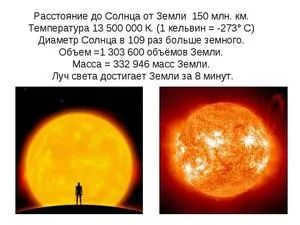
Solar masses are a unit of measurement used by astronomers to describe the mass of various celestial objects. For example, the largest star known to us, Eta Carina, is estimated to have a mass of approximately 150 solar masses.
Scientists have made predictions about the future activity of our own Sun based on observations of other stars. It is believed that the Sun will gradually deplete the energy of its photosphere and expand in size to an unprecedented extent. This expansion could lead to the engulfment of nearby planets such as Mercury and Venus, and there is a possibility that Earth could suffer the same fate. Eventually, the Sun will evolve into a red giant star. However, this growth phase will be followed by a catastrophic contraction, causing the Sun to shrink to the size of the Earth and become a white dwarf.
The Sun and the Moon are the two celestial bodies in our solar system that have the most significant influence on Earth. Let’s examine the similarities and differences between these two entities.
The Size of Earth and the Sun
The Sun, the largest celestial object in our solar system, has a mass of 28 million tons (8 million is a number with 27 zeros on the “short” mile scale used by most countries), accounting for approximately 99.87% of the total mass of our solar system.
On the other hand, Earth has a much smaller mass, weighing 6skstln tons (which is equivalent to tens of millions, or 10 raised to the power of 21 on the same scale). Simple calculations reveal that the Sun is 333,000 times heavier than our planet.
In order to determine the mass of large celestial objects, scientists use the solar mass parameter of the Sun instead of tons. For instance, a massive star can have a weight equivalent to 5-10 solar masses, while a gigantic black hole can weigh hundreds of millions of such units.
The Sun’s mass gradually decreases due to two specific processes occurring within its core.
- Reactions constantly convert hydrogen atoms into helium in the core, resulting in the heat we feel. This energy release is accompanied by a reduction in the Sun’s weight.
- The solar wind systematically blows electrons and protons out of the Sun into outer space.
The second process is well-known to scientists, and there is even a video demonstrating how it occurs.
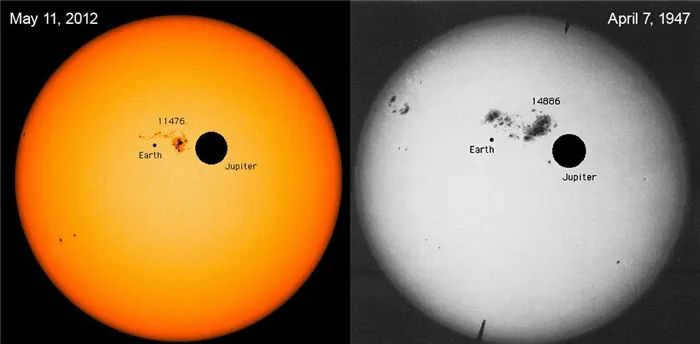
In order to determine the ratio of the Sun’s size to that of Earth, scientists have observed flares, which are another type of large-scale solar event. The image provided above depicts the active regions of the Sun that were recorded by research detectors at 65-year intervals. To provide a sense of scale, markers representing the sizes of Earth and Jupiter have been placed next to the Sun. From this comparison, it is clear that Jupiter, despite its size, would easily be dwarfed within the Sun’s area of 14886 – the Sun’s diameter exceeds 143 thousand kilometers. Source: nasa.
Dimensions of Objects
The Earth, with an average radius of 6371 kilometers, is smaller than the core of the Sun. To put it into perspective, the equatorial axis of the Sun can accommodate 109 planets of Earth’s size.
These are the dimensions of the central objects in the Solar System: the Sun, the Earth, and the Sun’s core.
However, when compared to other celestial bodies, our yellow dwarfs are considered relatively small. For instance, they are only 1/1000th the size of Alpha Orion, the red supergiant star Betelgeuse, and 1/2000th the size of the Big Dog star, the red supergiant star VY.
The size of large objects is proportional to the Sun’s mass and its solar irradiance.
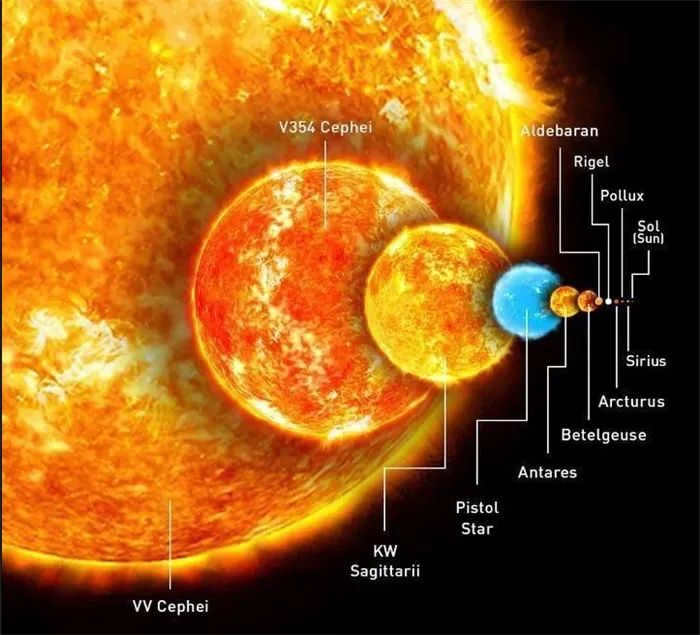
However, the Sun is the largest celestial object in our solar system. When compared to other known stars, it may appear smaller. Source: esa.
Comparison of Gravity
The Sun possesses the greatest gravitational force in our solar system, as its mass is 28 times that of the Earth.
An object weighing 100 kg on the surface of the Sun would weigh 2.8 tons. This immense gravitational force is lethal to living organisms as it would cause them to be crushed.
Instead of shrinking, the Sun would simply be displaced, maintaining its size. The conditions on the Sun’s surface would include:
- “boiling temperatures”;
- high pressure;
- nuclear fusion occurring within the star.
The Sun’s gravitational pull is so strong that even Pluto remains in orbit about 6 billion kilometers away from the star.
By lacking an oort cloud encircling the system from all directions, the Sun has the capability to draw in celestial bodies as substantial as two luminaries.
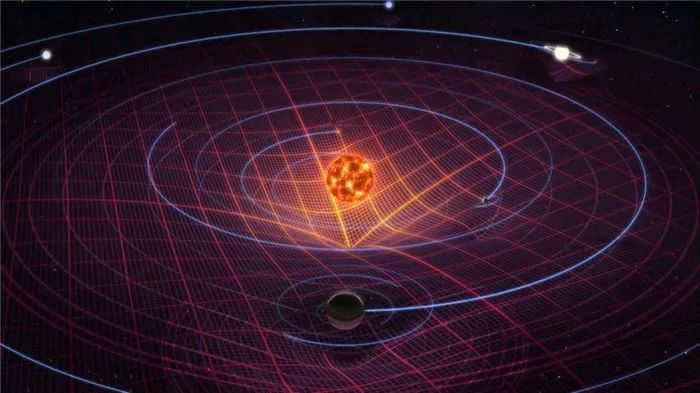
A depiction of the gravitational pull of the Sun as predicted by the theory of relativity. As per the theory, the Sun possesses the greatest mass and thus exerts a stronger gravitational force in space, causing other objects to be attracted towards it. Source: gravity Plan B/USA.
Subsequently, the star undergoes a rapid contraction and transforms into a white dwarf. Presently, there is a difference of opinion among scientists regarding whether the Sun and Earth will remain the largest entities.
Comparison of gravitational forces
In the Solar System, the Sun boasts the most powerful gravitational force. Its gravitational field is a staggering 28 times stronger than that of Earth. The nearest star, on the other hand, has a gravitational acceleration of 274 m/s2. In stark contrast, Earth’s gravitational acceleration is a mere 9.807 m/s2.
The weight of objects on Earth and the Sun varies significantly, even for the same mass. To illustrate, a 100 kg object from our planet would weigh a whopping 2.8 tons when brought to the Sun. Clearly, it would be unable to withstand such immense pressure.
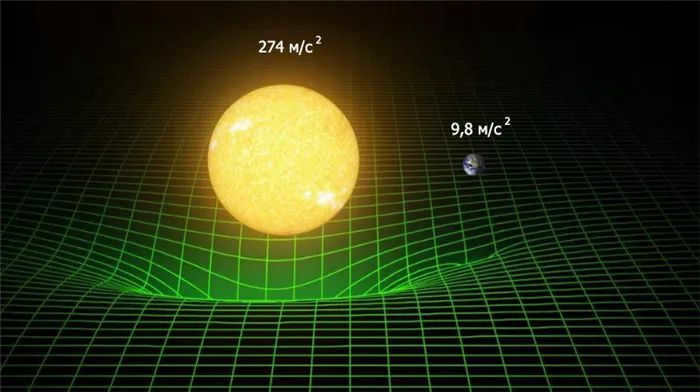
The Sun retains its shape in such intense gravity due to several factors.
- The process of nuclear fusion occurring within the Sun.
- The presence of high atmospheric pressure.
- The extreme temperatures within the Sun.
Additionally, the Sun is capable of attracting objects with its gravitational pull that can travel for two years at the speed of light, but its strong magnetic field prevents this from happening.
Comparison between the Size of the Sun and the Earth
One can compare these celestial bodies based on the following criteria:
The Sun’s primary luminous body has a diameter that is 109 times greater than that of the Earth. The Sun’s surface area is 11918 times larger than that of the Earth, while its volume is 1301019 times larger.
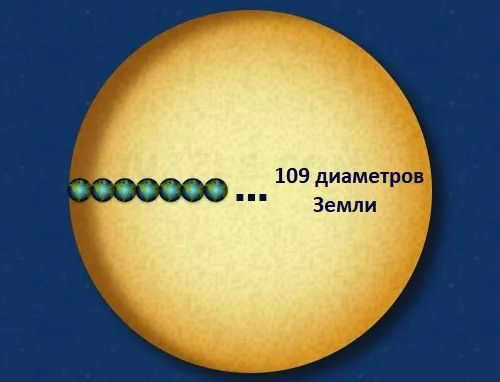
Below is a table that summarizes the relative sizes of the Earth and the Sun.
| Parameters | Sun | Earth |
| Diameter, km | 1392000 | 12742 |
| Radius, km | 695000 | 6371 |
| Surface area, m 2 | 6,07877⋅10 18 | 5,101*10 14 |
| Volume, m 3 | 1,40927*10 27 | 1,08321*10 21 |
The Sun, the most massive star in our solar system, has a weight of 28 million tons (a number with 27 zeros on the “short” mile scale commonly used worldwide), accounting for approximately 99.87% of the total mass of the solar system.
10 lesser-known facts about the Sun that everyone on Earth should be aware of
Receive one of the most popular articles directly in your inbox every day. Stay connected with us on Facebook and Vkontakte.
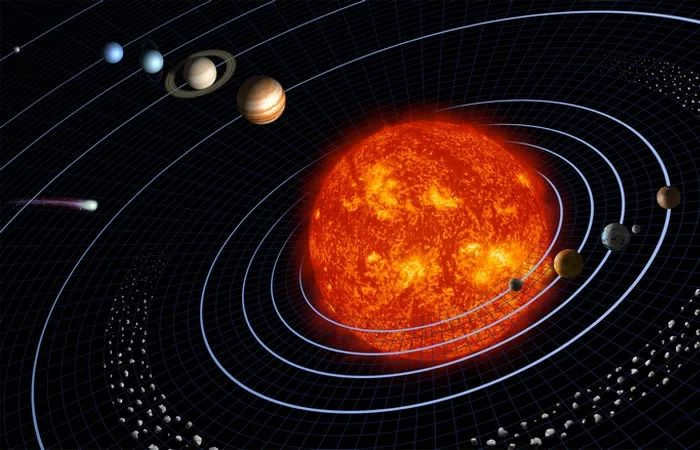
The Sun acts as the central hub of our solar system, providing the gravitational force that keeps the planets and satellites in orbit. Experts argue that even a slight alteration in the Sun’s mass or size could have catastrophic consequences for life on Earth. In this article, we have curated a collection of fascinating facts about the extraordinary stars within our solar system.
1. The Sun is incredibly massive
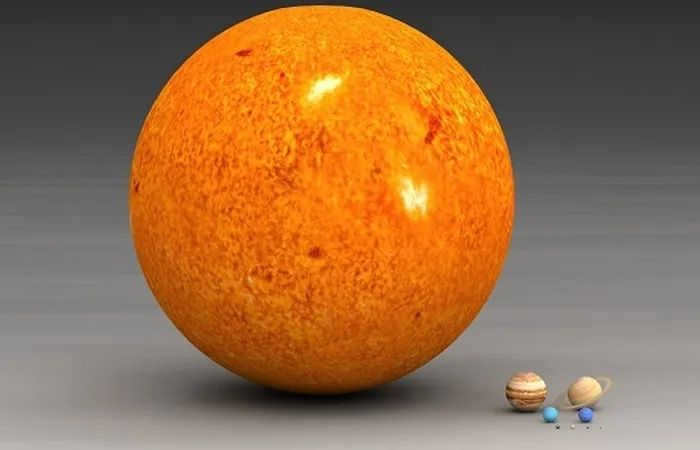
The Sun makes up a staggering 99.8% of the total mass of our solar system. This fact may be surprising, but it’s true – all the planets, moons, and other celestial bodies combined only contribute to less than 0.2% of the solar system’s mass. To put it into perspective, the Sun’s mass is approximately 2 billion kilograms, which is equivalent to 2 followed by 30 zeros. In terms of size, the Sun is about 1.3 million times larger than the Earth.
In astronomy, the mass of the Sun serves as a standard unit of measurement for large objects. When describing the mass of stars, nebulae, and even galaxies, astronomers often compare them to the mass of the Sun.
It is often stated that the Sun is incredibly vast, although this is only when compared to other objects within our solar system. Nevertheless, there exist much larger entities throughout the cosmos. The Sun is categorized as a G-type star, commonly referred to as a yellow dwarf star.
As the name suggests, there are significantly larger stars that fall into the categories of giants, hypergiants, and supergiant stars. One such example is the Red Supreme UI of Shields, which resides a staggering 9,500 light-years away from Earth. Currently, it holds the title for being the largest known star, boasting a mass approximately 1,700 times greater than that of the Sun. Its surface area spans an astonishing 7.5 billion kilometers. Even light itself requires nearly seven hours to complete a full orbit around this stellar behemoth. If the UY Shield were to exist within our solar system, its surface would extend beyond the orbit of Jupiter.
What occurs when the Sun reaches the end of its life
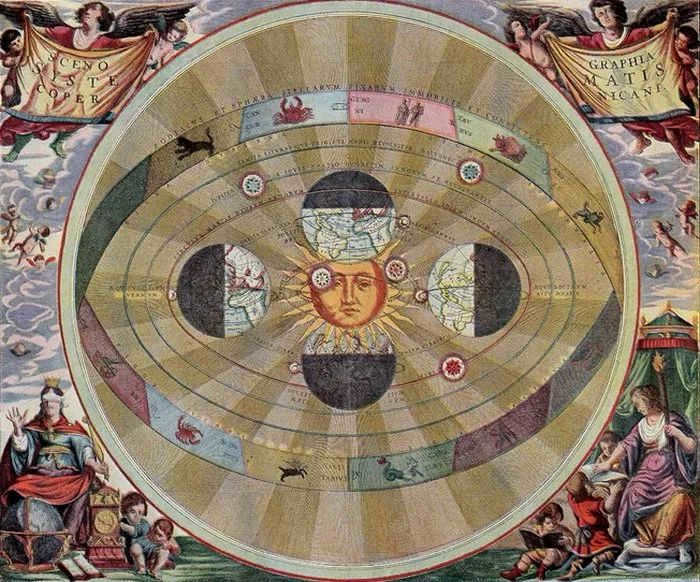

Stars have the ability to exist for an extended period of time, billions of years, before eventually reaching their demise. The destiny of a star is determined by its size. Smaller stars transform into brown dwarfs like this one once they have exhausted their fuel. On the other hand, larger stars experience a more powerful end, transforming into hypernovae or hypernovae and collapsing into either neutron stars or black holes. In some rare instances, these colossal stars even explode, emitting bursts of gamma rays.
The Sun falls somewhere in the middle – it neither explodes nor “deflates”. As the Sun consumes its hydrogen fuel, it begins to collapse under the weight of its own gravity, resulting in a denser core. This causes the Sun to expand and become a red giant. Eventually, it will shrink down to a white dwarf, a small celestial remnant with incredible density (about the size of the Earth, but with the mass of the Sun).
Not many individuals consider it, yet the Earth is actually at the perfect distance from its star and is an ideal size. How can we assert that?
Complete the sentence: the Sun’s surface temperature is ________.
And it should be at the center of the Sun.
Furthermore: the Earth’s diameter is ________.
________. The largest planet in the solar system is ________.
________. Its diameter is 11 times that of the Earth and its mass is ________.
Reiterate the mass of our planet.
The smallest planet in our solar system.
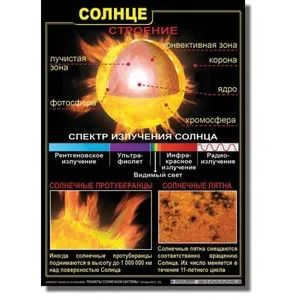
What is the distance between the Earth and the Sun?
The Earth’s distance from the Sun.
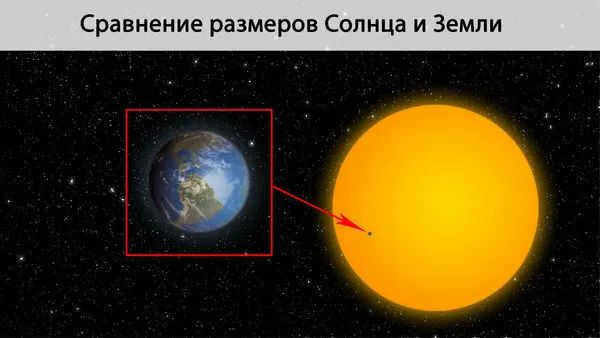
The Sun is located at a distance of 150 million kilometers from the Earth, while the Moon is much closer, at a distance of 384,000 km.
Let’s calculate the distance in kilometers and the number of times the Moon is closer to our planet.
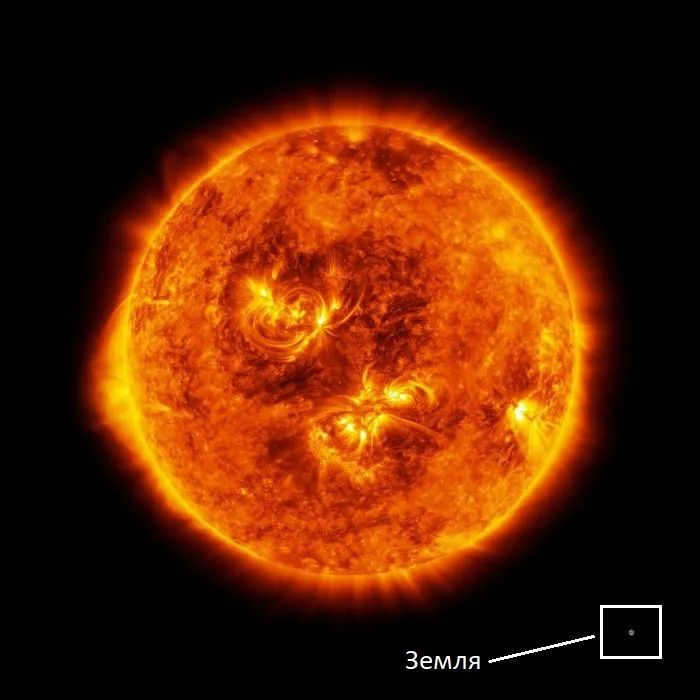
Closest to our planet are the Sun, the Moon, and the stars.
You are currently viewing a page that discusses the difference in mass between the Sun and Earth, categorized under the field of Biology. The difficulty level for this question ranges from grades 1 to 4. In addition to searching for the correct answer, you have the option to review other users’ answer choices, engage in discussions about the topic, and select the most appropriate version. If you are unable to find a comprehensive answer that addresses the entire topic, you can click on the button at the top of the page to view all similar answers or utilize the intelligent search tool to create your own unique question.
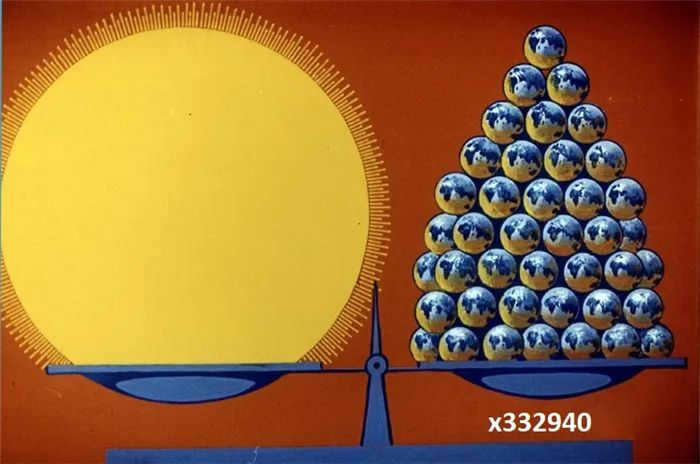
There is a possibility that the soil is rich in nutrients and can support plant growth.
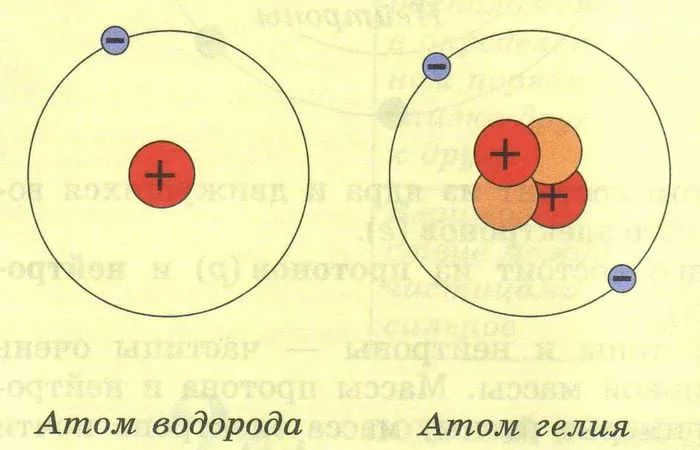

The pine tree is a type of tree that produces seeds. Inside the cone of the pine tree, there is a seed that contains both male and female reproductive parts. The male part, called the pollen grain, and the female part, called the egg, develop from this seed.
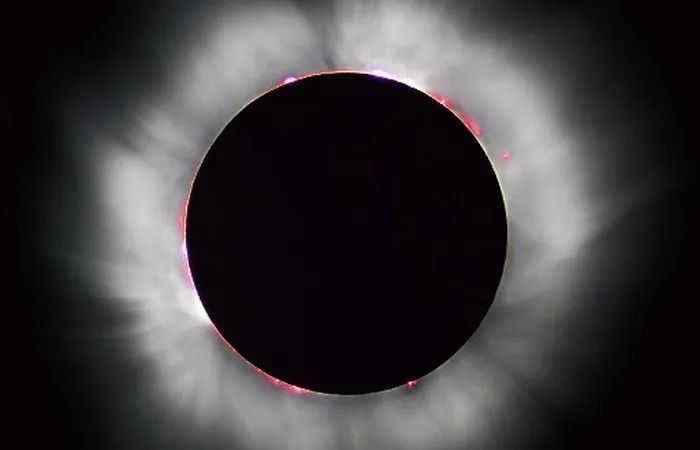
1) Diseases caused by viruses such as influenza, natural po, orphanitis, encephalitis, HIV, and AIDS do not possess a nucleus. 2) The infection affects the leaves and trunk. 3) Bacteria, on the other hand, do have a nucleus. 4) Ivanovsky made the discovery in 1892. 5) There is no information available for this point. 6) Uppercase letters indicate extreme harm.
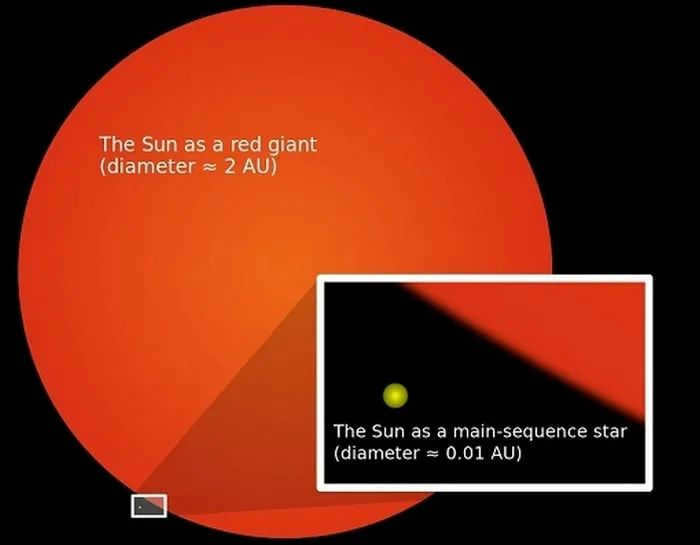
Hematopoiesis is a life form that reproduces through the process of spawning.
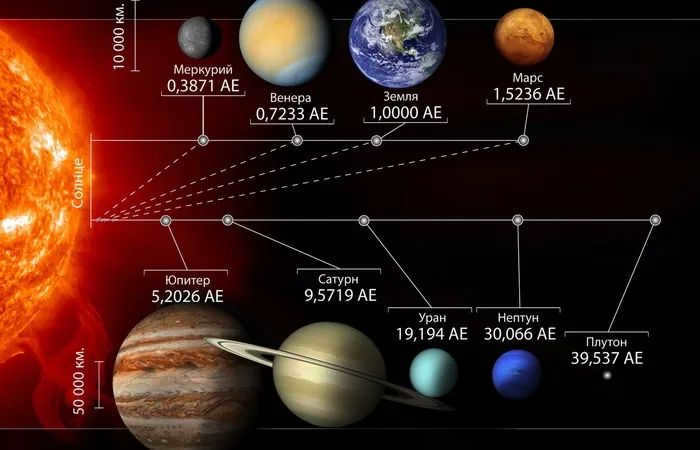
The planet we inhabit is called Earth, and it is not a coincidence that it holds the most precious resources. Earth is not only our dwelling place, but also our sustainer. Our birthplace and ancestral land hold great significance to us as individuals. Therefore, it is imperative that we assume responsibility for its well-being.
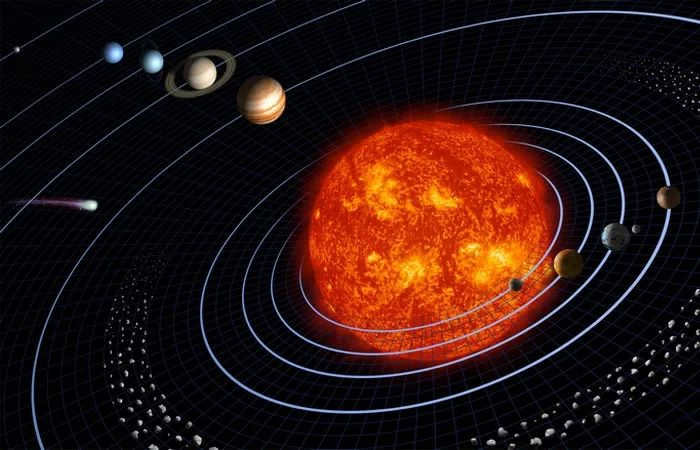
We provide a concise and straightforward explanation here. If needed, please refer to supplementary resources.
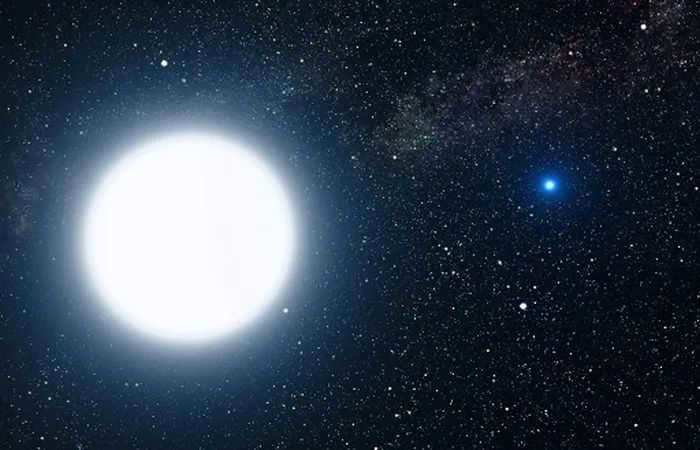
Mosses are considered to be higher plants due to the presence of organs like shoots, roots, and leaves.
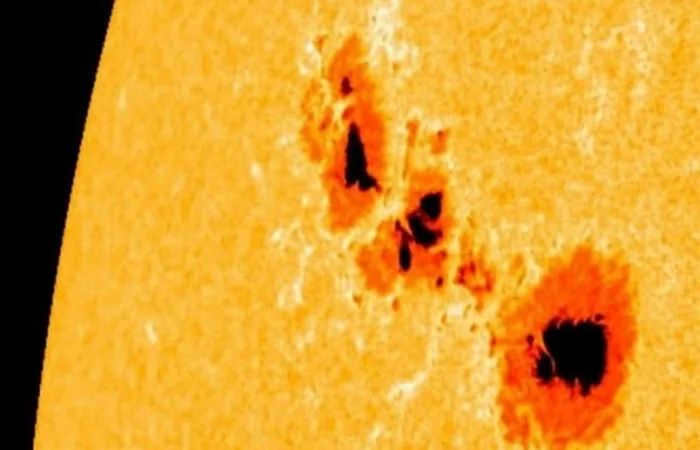
Rapana2 or venosa3 (Latin Rapana venosa) is a type of predatory gastropod mollusk. Originally discovered in the lagoons of Peter the Great (Far East) and along the coast of Japan, this species was later identified in the Black Sea during the early 1900s …
